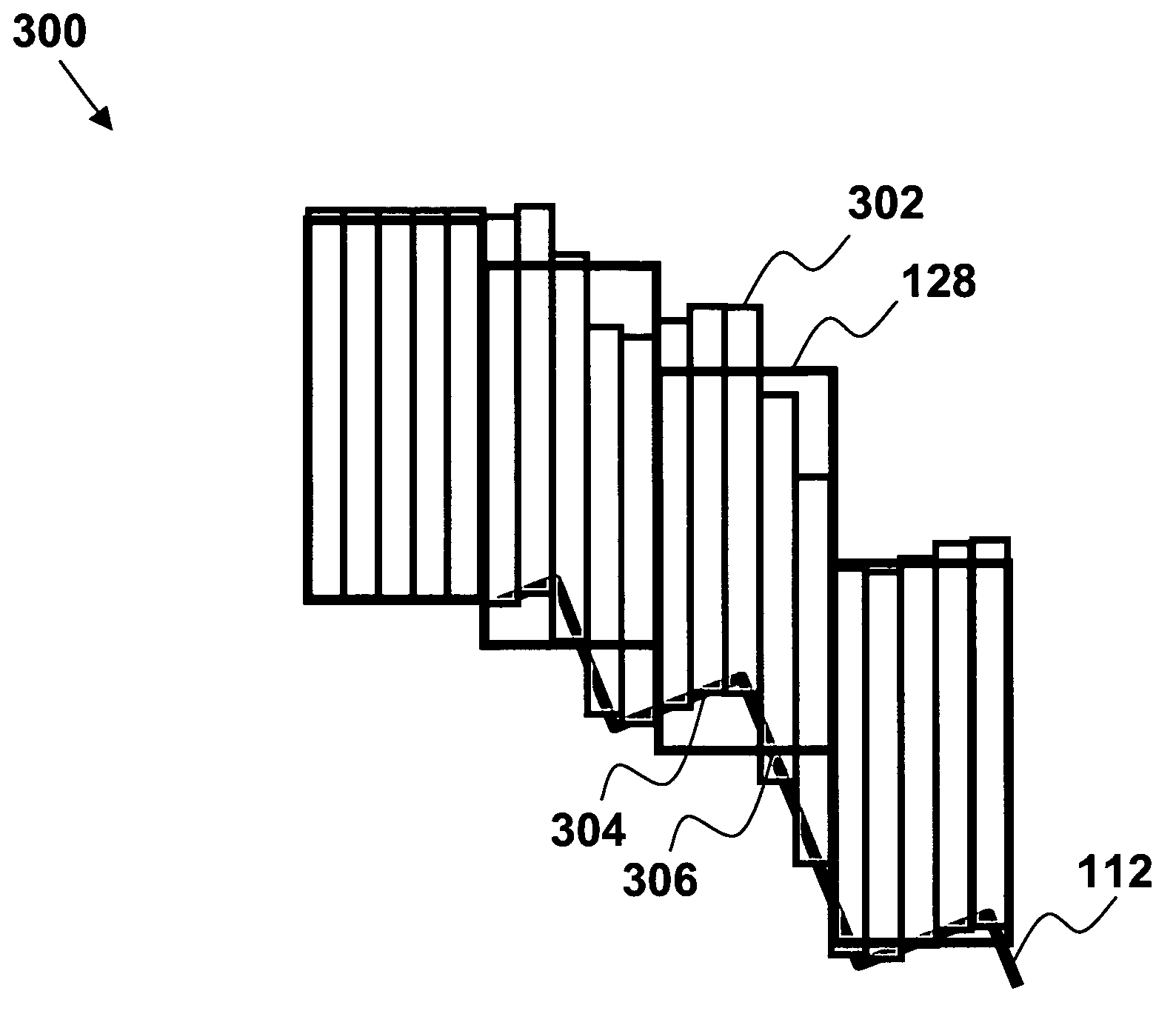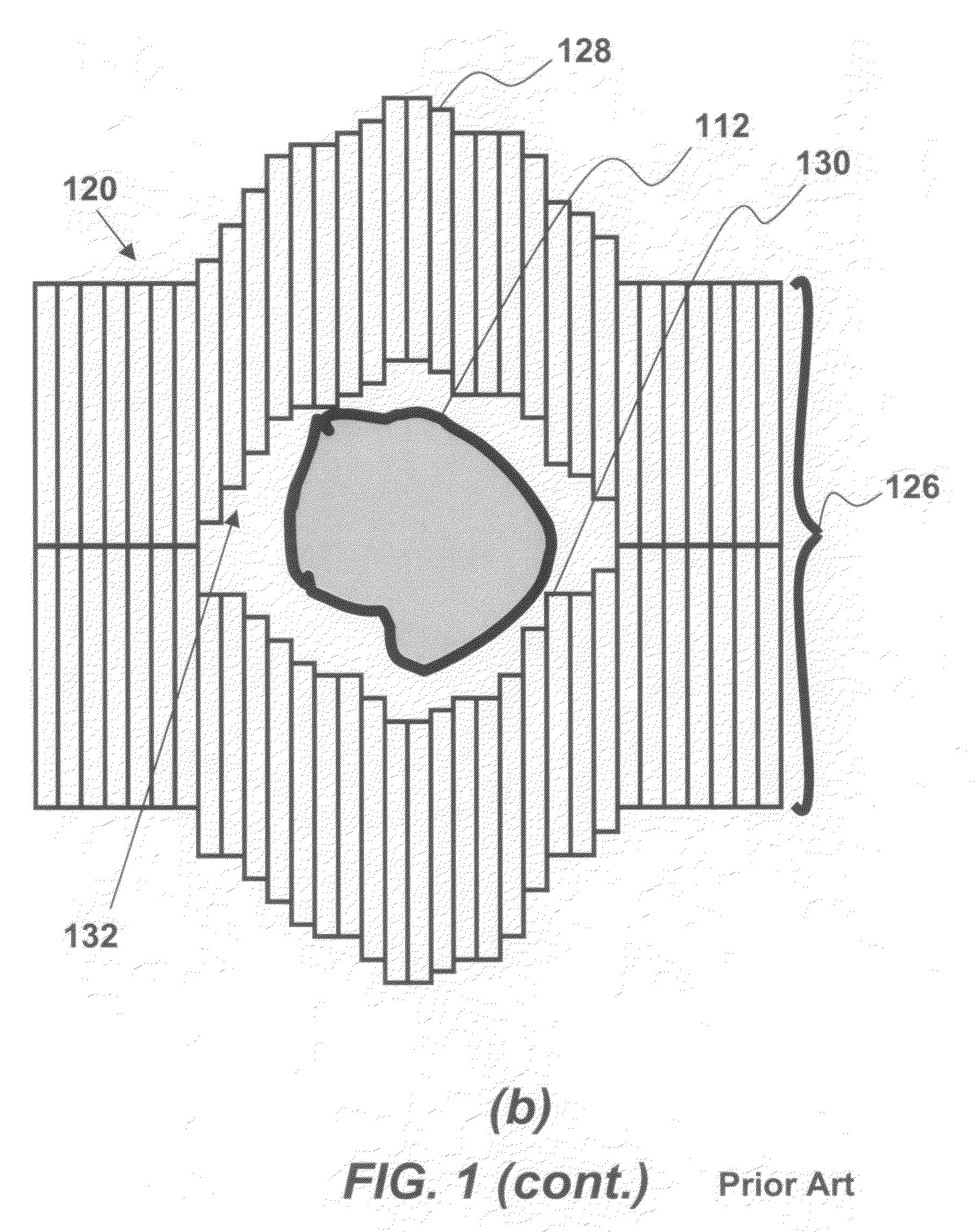Method to track three-dimensional target motion with a dynamical multi-leaf collimator
a multi-leaf collimator and three-dimensional target technology, applied in the field of radiation therapy, can solve the problems of significant geometric and dosimetric uncertainties in both treatment planning and dose delivery, interfaction errors, and insufficient dose delivery to tumor target(s)
- Summary
- Abstract
- Description
- Claims
- Application Information
AI Technical Summary
Benefits of technology
Problems solved by technology
Method used
Image
Examples
Embodiment Construction
[0042]Although the following detailed description contains many specifics for the purposes of illustration, anyone of ordinary skill in the art will readily appreciate that many variations and alterations to the following exemplary details are within the scope of the invention. Accordingly, the following preferred embodiment of the invention is set forth without any loss of generality to, and without imposing limitations upon, the claimed invention.
[0043]The current invention advances the ultimate objective of image guidance in radiotherapy by accurately hitting the tumor without imposing any extra “cost” (such as surgical implantation of markers and / or x-ray imaging) upon the patient, where radiotherapy is defined as the use of some form of ionizing radiation including but not limited to photons, electrons, protons and ions. The current invention provides continuous, high-quality position monitoring combined with real-time beam adaptation.
[0044]The present invention provides a new ...
PUM
 Login to View More
Login to View More Abstract
Description
Claims
Application Information
 Login to View More
Login to View More - R&D
- Intellectual Property
- Life Sciences
- Materials
- Tech Scout
- Unparalleled Data Quality
- Higher Quality Content
- 60% Fewer Hallucinations
Browse by: Latest US Patents, China's latest patents, Technical Efficacy Thesaurus, Application Domain, Technology Topic, Popular Technical Reports.
© 2025 PatSnap. All rights reserved.Legal|Privacy policy|Modern Slavery Act Transparency Statement|Sitemap|About US| Contact US: help@patsnap.com



